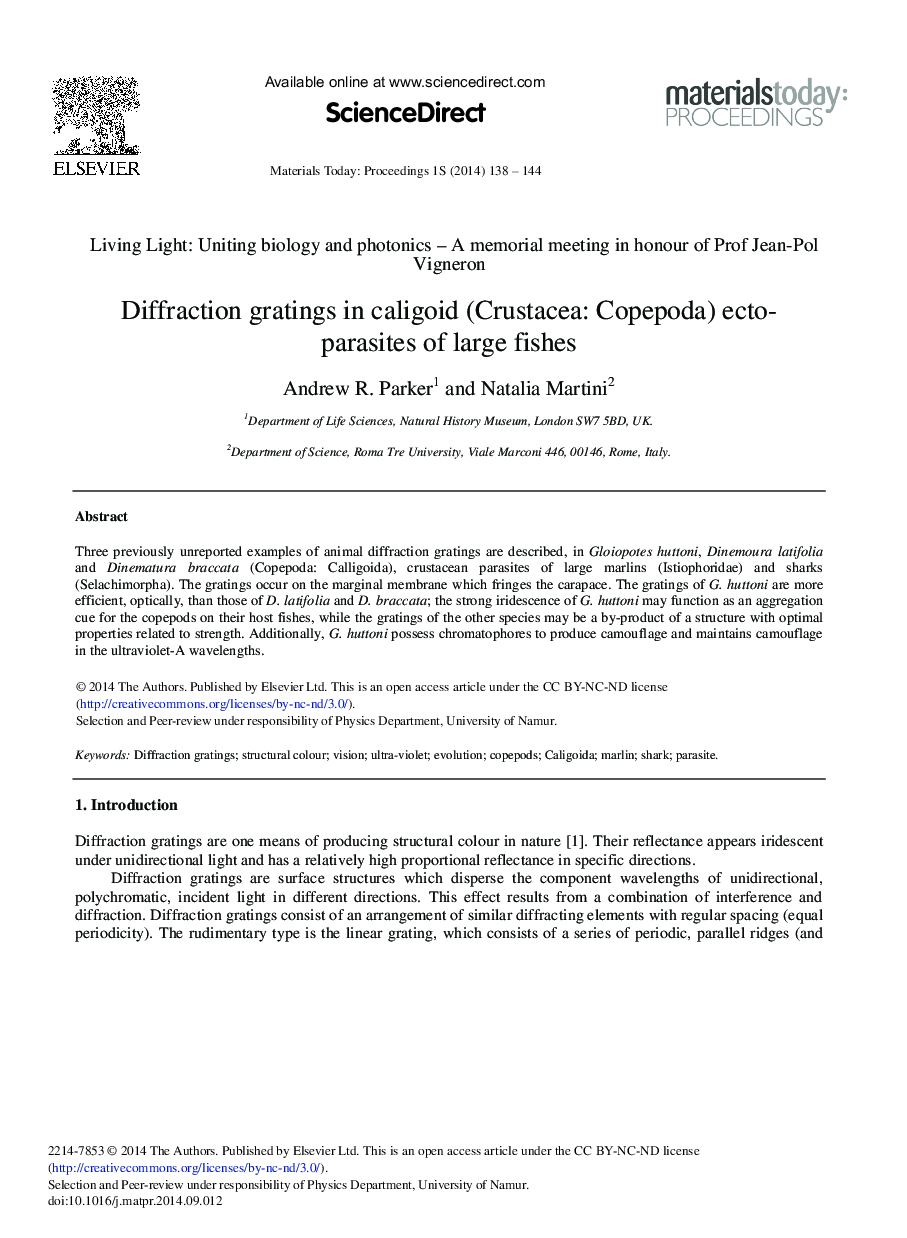| Article ID | Journal | Published Year | Pages | File Type |
|---|---|---|---|---|
| 1631268 | Materials Today: Proceedings | 2014 | 7 Pages |
Three previously unreported examples of animal diffraction gratings are described, in Gloiopotes huttoni, Dinemoura latifolia and Dinematura braccata (Copepoda: Calligoida), crustacean parasites of large marlins (Istiophoridae) and sharks (Selachimorpha). The gratings occur on the marginal membrane which fringes the carapace. The gratings of G. huttoni are more efficient, optically, than those of D. latifolia and D. braccata; the strong iridescence of G. huttoni may function as an aggregation cue for the copepods on their host fishes, while the gratings of the other species may be a by-product of a structure with optimal properties related to strength. Additionally, G. huttoni possess chromatophores to produce camouflage and maintains camouflage in the ultraviolet-A wavelengths.
